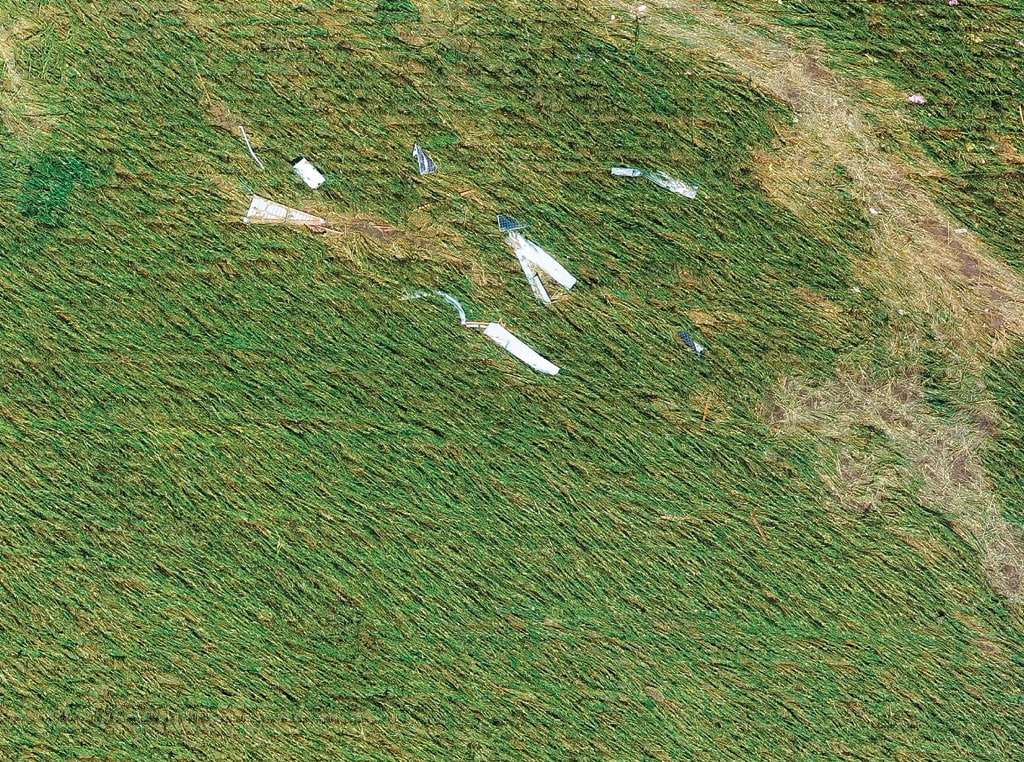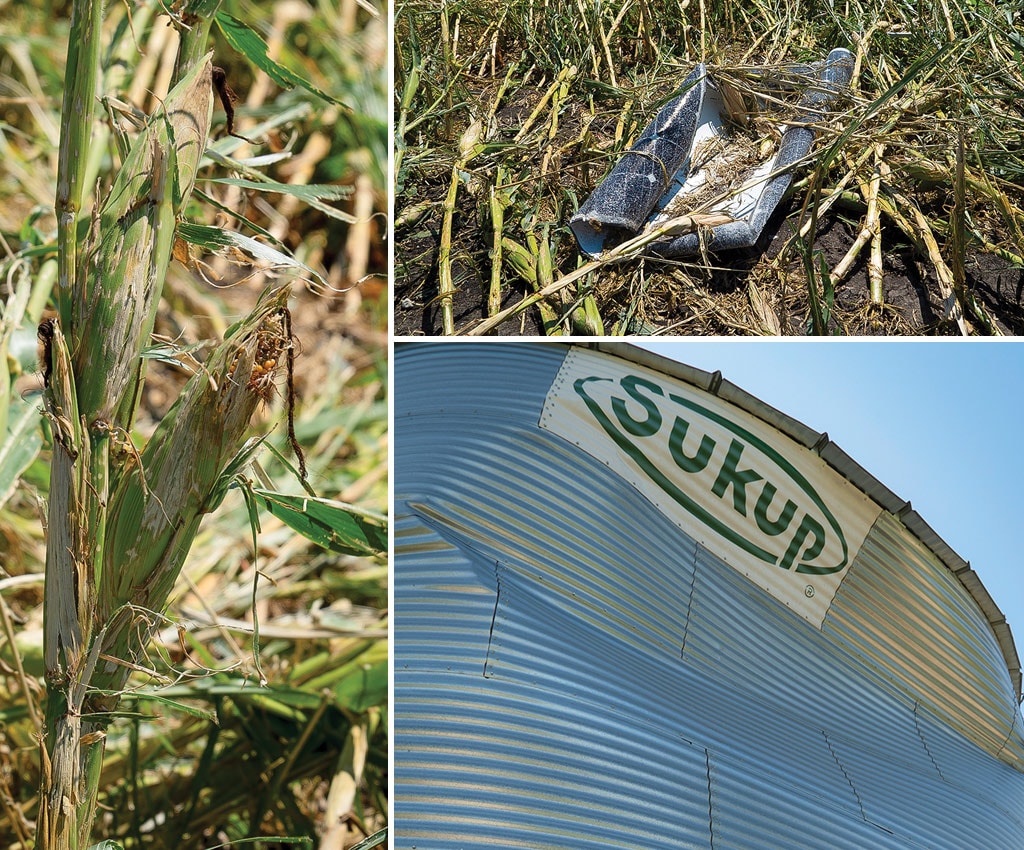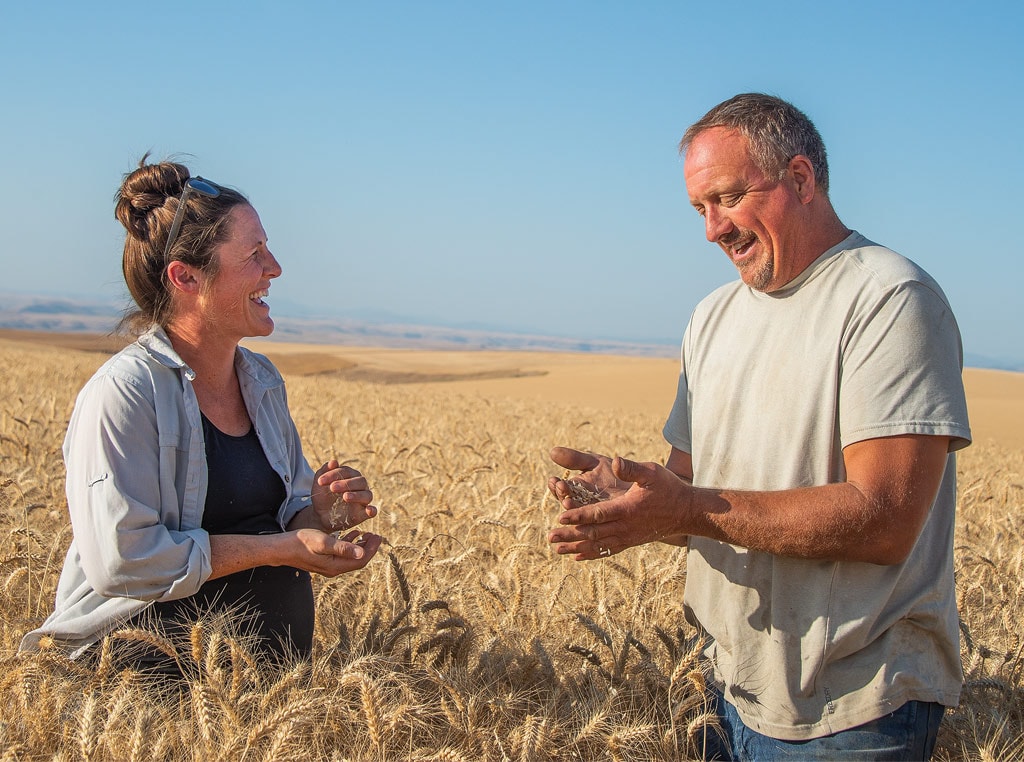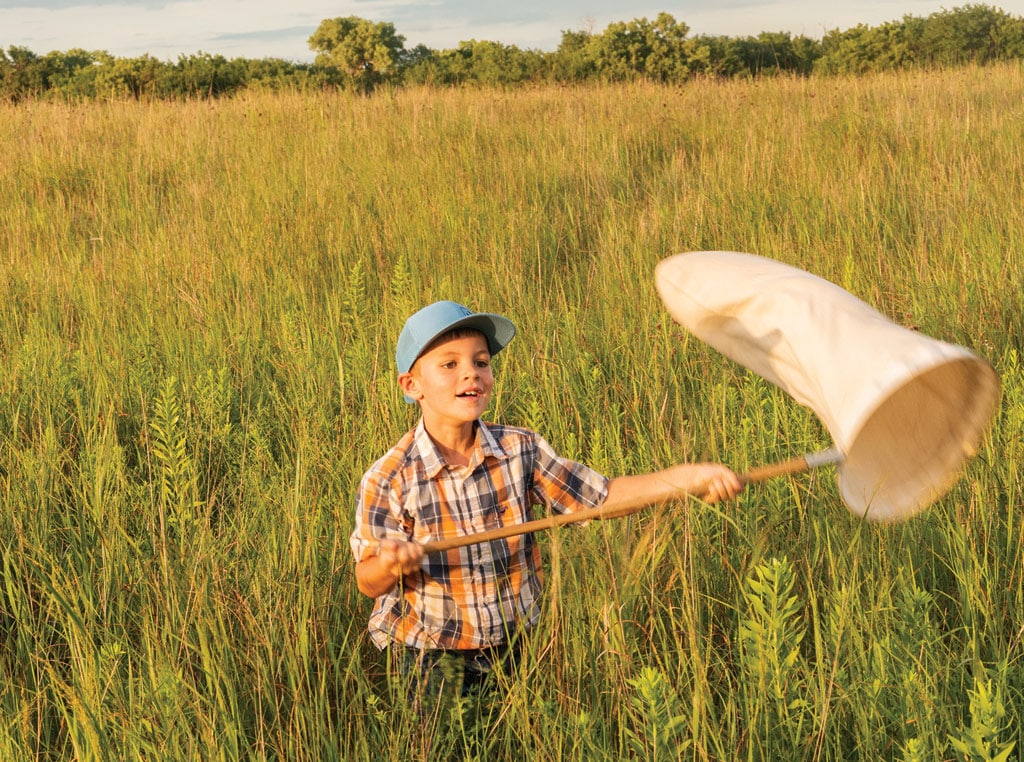
The August 2020 derecho swept across more than 8 million acres of corn in Iowa alone. Debris is still being gathered from fields, months after the derecho ended.
Agriculture February 01, 2021
Down But Not Out
How Midwest growers are dealing with aftereffects from the derecho.
In the early morning hours of Aug. 10, 2020, a thunderstorm began to develop in northeast Nebraska. It seemed poised to deliver muchneeded precipitation to the heart of the Corn Belt.
By mid-morning, however, as reports of wind damage began to trickle in from west-central Iowa, it was soon apparent that this was more than a typical summer rainstorm. It was a locomotive—a derecho, a long-lived windstorm associated with fast-moving thunderstorms that some call an “inland hurricane”—and it was following the track of U.S. Highway 30 through the center of the state.
By noon, it was about to unload its wrath on Benton County. At the Schwab family farm near Belle Plaine, Denise had just finished a web-based conference call and her husband, Terry, had come into the house for lunch. The skies had been darkening, and at 12:10 p.m., the derecho arrived with a vengeance. “I will never forget it,” Denise says.
She and Terry watched from their farm office; the winds and driving rain limited visibility to the point that they sometimes could not see their machine shed, located less than 300 feet away. “At one point, I thought I saw the door to the horse barn fly past,” she says. And she had. After 45 minutes, the main part of the storm subsided, allowing the Schwab family to survey the damage. Not only was the horse barn destroyed, but the machine shed had blown away, and the shop damaged to the point that it had to be demolished. Grain bins were gone, the combine was a total loss, and acres of corn were damaged to the point that it was “zeroed out” by crop insurance adjusters.
Aftereffects. The Schwab farm was just one of hundreds that were affected as the storm continued to roll on. It did not weaken until it reached northern Ohio more than 14 hours (and 770 miles) after it started. Insurance officials place the damage estimate at $7.5 billion, making it the most costly thunderstorm event in U.S. history.
And now, farmers who were in the path of the derecho are dealing with the aftereffects of the mighty blast as they prepare for the 2021 growing season. A team from Iowa State University quickly offered a webinar on one of the most challenging aftereffects—the avalanche of biomass from the once-promising corn crop, and the potential for thousands of volunteer corn plants popping up in the subsequent crop.
Matt Darr, a professor in ISU’s Agricultural and Biosystems Engineering Department, pointed out that the combine not only harvests grain but provides a mechanical pass that sizes corn residue. Finding an alternative to help size residue on unharvested acres can start that residue on its way to breaking down in time for the next planting season.
A mechanical pass also could encourage the sprouting of viable kernels, helping to reduce the seed bank. “Every germinated seed in the fall is one less volunteer corn plant in the spring,” Darr pointed out.
That effort led Iowa farmers to try a variety of approaches; rolling, disking, vertical tilling, disk-ripping (generally with shanks removed to prevent plugging), or some combination of these. The choice at Bice Farms, a Woodward, Iowa, operation hit hard by the derecho, was a stalk chopper followed by disking—as needed. “Our theory was to get the volunteer corn growing,” says Rod Bice. “And when the field looked solid green, to turn it again.”
On his Garwin, Iowa, farm, Eli Mathern let his beef cows do some of the cleanup work. He strip-grazed cows and calves on stalks, after disking the stalks to expose the ears. The cattle were adjusted to the increased starch intake from the kernels by feeding the animals corn for several days before they were turned out.
Mathern also made some 5x6-foot round bales from the downed corn. “We’ll have to be careful when we feed those as well,” he says. “We calculated that there is probably between 700 and 900 pounds of corn in each bale.”
Up from ashes. The 2021 growing season will have its challenges for derecho survivors. Volunteer corn is best controlled when 12 inches or less in height, so that probably means multiple herbicide passes. Equipment needs repaired, buildings replaced, residue cleared from fields.
The list seems endless, but Denise Schwab says she and her neighbors are up to the challenge. “It will take a long time to rebuild, and we will be picking up debris for years,” she admits. “But we are Iowa farmers. We will hunker down and make things work.”

More than 57 million bushels worth of commercial grain storage were destroyed in Iowa, and a significant amount of the state’s 2.1 billion bushels of on-farm storage received storm damage.
Read More

Ag Tech, Farm Operation
DIgging Into Data
Refining knowledge to farm successfully in a margin era

Agriculture, Sustainability
Insect Inventory
Declining numbers are bad news for agriculture.
